Digital Poster
Muscle: Biomarkers & More
ISMRM & ISMRT Annual Meeting & Exhibition • 10-15 May 2025 • Honolulu, Hawai'i

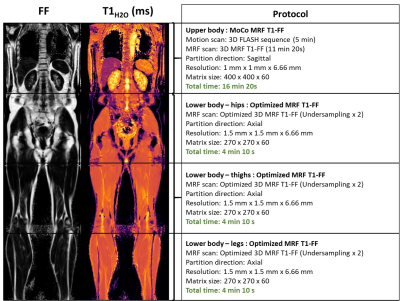 |
Computer Number: 113
2213. Quantitative
whole-body musculoskeletal profiling for the systemic evaluation
of muscle tissues
C. Slioussarenko, P-Y Baudin, M. Lapert, Y. Fromes, B. Marty
Institute of Myology, Paris, France
Impact: The proposed 30-minute free-breathing qMRI
protocol should enable more accurate monitoring of NMD
progression and treatment responses, and opens up the
possibility of examining simultaneously other affected
organs, such as the liver.
|
|
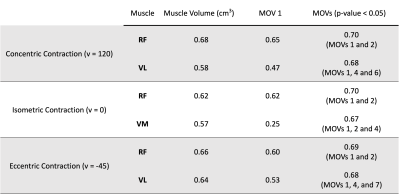 |
Computer Number: 114
2214. Statistical
shape modeling of skeletal muscles improves the prediction of
muscle strength
S. Bin Ghouth, V. Mazzoli
New York University, New York, United States
Impact: Shape features of quadriceps muscles extracted
from statistical shape modeling demonstrated a higher
prediction of muscle strength of the rectus femoris, the
vastus lateralis and the vastus medialis muscles in healthy
subjects.
|
|
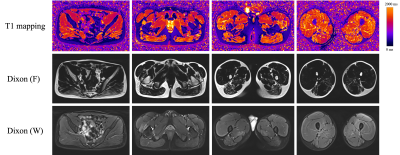 |
Computer Number: 115
2215. MRI
biomarker assessment of Duchenne muscular dystrophy disease
progression: a 12-month longitudinal study
Y. Song, H. Xu, Y. Guo, X. Li
Department of Radiology, West China Second University Hospital, Sichuan University, Chengdu, China
Impact: The high sensitivity of MRI biomarkers to subtle
muscle changes enables early detection of pathology, making
it a valuable tool for tracking disease progression from
subclinical to symptomatic stages.
|
|
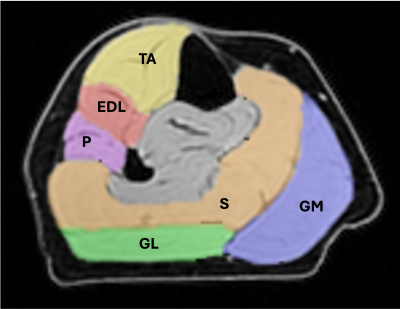 |
Computer Number: 116
2216. Calf
Muscle Volume and Fat Fraction Changes Following Bedrest
K. Walz, M. Malekzadeh, M. Masoomikhanghah, J. Johnston, S.
Kontulainen, E. McWalter
University of Saskatchewan, Saskatoon, Canada
Impact: Lower leg muscle volume decreases and fat
fraction increases after periods of unloading due to
bedrest. While most muscles return to pre-bedrest levels
after a month, exercise countermeasures should be further
developed to moderate or eliminate this initial loss.
|
|
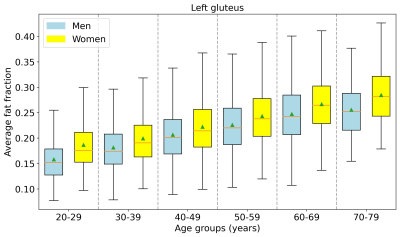 |
Computer Number: 117
2217. Investigating
Fat Fraction in Gluteus and Psoas Muscles Among Smokers and
Non-Smokers in the German National Cohort (NAKO)
M. Winter, F. Schick, B. Yang, L. Kiefer
University Hospital Tuebingen, Tuebingen, Germany
Impact:
This study
demonstrates that automated fat fraction quantification in
gluteus and psoas muscle groups from MRI reveals significant
increases with age and higher muscle fat content in smokers.
These insights may inspire new research into muscle health
interventions. |
|
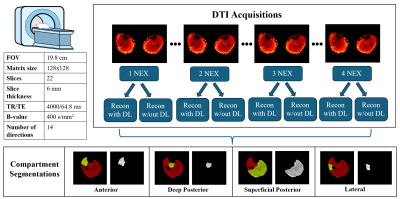 |
Computer Number: 118
2218. The
Effects of Deep Learning Imaging Denoising on Quantitative
Diffusion Metrics of Lower Leg Muscles
M. George, M. Barbieri, L. Hales, A. Pai, V. Mazzoli, F.
Kogan
Stanford University, Stanford, United States
Impact: The influence of DL-denoising on quantitative
diffusion tensor imaging (DTI) metrics is unknown. We found
that DL-denoising in lower leg muscles does not affect
quantitative DTI measures but also does not improve accuracy
at lower signal averages.
|
|
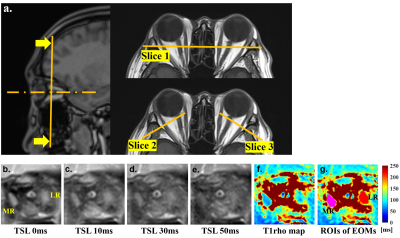 |
Computer Number: 119
2219. Using
quantitative T1rho mapping on extraocular muscles for assessing
activity of thyroid-associated orbitopathy: preliminary
observation
Z. Zhou, M. Deng, Z. Yu, J. K. M. Ng, K. K. W. Chan, K. K.
L. Chong, W. Chen, W. C. W. Chu
The Chinese University of Hong Kong, Hong Kong, Hong Kong
Impact: First implementation of quantitative T1rho
mapping in orbit MRI to evaluate TAO-affected EOMs.
|
|
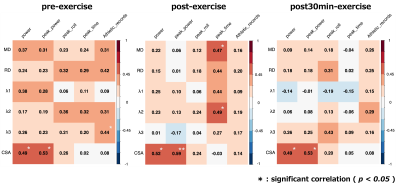 |
Computer Number: 120
2220. The
relationship between skeletal muscle DTI metrics and athletic
performance in track and field sprinters
T. Ozawa, K. Kamagata, S. Shibukawa, M. Takahashi, K.
Takabayashi, W. Uchida, T. Kitagawa, R. Zou, K. Mizuta, A.
Hagiwara, M. Nakaya, K. Yamanaka, J. Kim, N. Mizuguchi, K.
Yamazaki, T. Iwasaki, H. Waki, S. Aoki
Juntendo University, Tokyo, Japan
Impact: Our
findings demonstrated that DTI has the potential to evaluate
muscle microstructure and for developing training strategies
and optimizing performance.
|
|
 |
Computer Number: 121
2221. Enhancing
Skeletal Muscle Injury Assessment via Time-Dependent Diffusion
MRI
X. Niu, P. Zhang, M. Wang, M. Chen, T. Feiweier, J. Zhao
The Third Hospital of Hebei Medical University, Shijiazhuang, China
Impact: Td-dMRI improves the accuracy of skeletal muscle
injury diagnosis by reliably distinguishing healthy from
affected tissues, identifying muscle edema, and providing
insights into compartmental involvement, particularly
highlighting minimal impact on the posterior superficial
compartment.
|
|
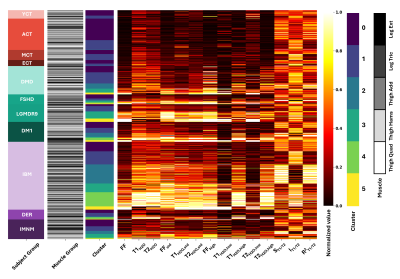 |
Computer Number: 122
2222. Multi-parametric
MRI evaluation of skeletal muscle alterations using FF, T1H2O,
and T2H2O in healthy and pathological subjects
B. Marty, P-Y Baudin, G. Bassez, T. Evangelista, T.
Stojkovic, S. Olivier, S. de Lucia, F. Cao, O. Benveniste,
Y. Allenbach, Y. Fromes, H. Reyngoudt
Institute of Myology, Paris, France
Impact: FF, T1H2O and
T2H2O are
sensitive biomarkers for detecting muscle alterations. Their
combination allows categorizing muscles into clusters which
may reflect different underlying pathological processes.
This approach holds promise for improving patient
phenotyping and enhancing diagnostic precision in
neuromuscular diseases.
|
|
 |
Computer Number: 123
2223. Identification
of sarcopenia and exploration of the “bone-muscle” association
using multiparametric quantitative MRI: a cross-section study
X. Li, Q. Li, H. Tao, S. Chen
Huashan Hospital Fudan University, Shanghai, China
Impact: This study showed that functional MRI parameters
of the paravertebral muscles have the potential to predict
sarcopenia. Furthermore, the occurrence of osteoporosis and
sarcopenia are not independent. There were associations
between specific paravertebral muscle components and
vertebral bone marrow.
|
|
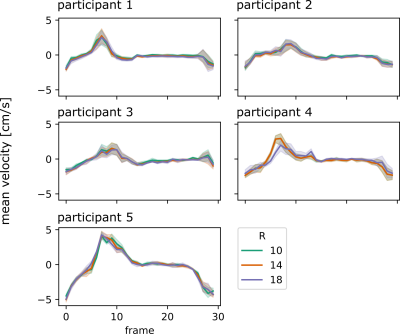 |
Computer Number: 124
2224. Development
of a time-resolved 3D phase contrast protocol for the upper leg
muscles during dynamic exercise: Initial results
S. Rauh, E. Schrauben, M. Hooijmans, L. Vos, A. Nederveen,
G. Strijkers, H. Kan
C.J. Gorter MRI Center, Leiden University Medical Center, Leiden, Netherlands
Impact: Phase-contrast MRI is a promising tool to assess
muscle contractions and muscle function. In this work, we
investigated the effect of undersampling and B0 on PC-MRI
data quality in the thigh muscles and found consistent
z-velocites for all undersampling factors.
|
|
 |
Computer Number: 125
2225. Association
Between MRI Features and Histopathology in Paraspinal Muscle
Atrophy and Fiber Type Distribution in CLBP: A Cross-Sectional
Study
C. Li, B. He
Department of Medical Imaging, the First Affiliated Hospital of Kunming Medical University, Kunming, Kunming, China
Impact: By demonstrating that both CSA and DTI metrics
can non-invasively assess muscle atrophy and fiber type
distribution, this study supports MRI’s role in enhancing
CLBP diagnosis and treatment, particularly in monitoring
muscle degeneration and guiding therapy.
|
|
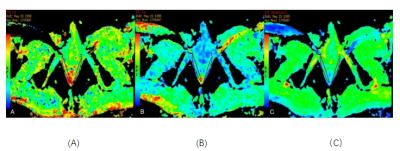 |
Computer Number: 126
2226. Changes
in DKI parameters in stress urinary incontinence patients: a
case control study
K. Ou, W. Liu, K. Zhang
The First Hospital of Hunan University of Chinese Medicine, Changsha, China
Impact: Diffusion MRI-derived parameters enable the
early detection of subtle muscle changes in SUI patients,
supporting advanced diagnostic tools for identifying
microstructural disruptions. These findings promote the use
of diffusion imaging for accurate SUI assessment and
treatment planning.
|
|
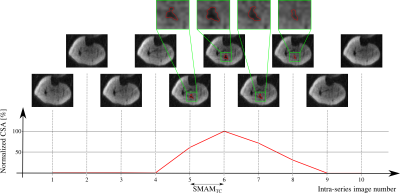 |
Computer Number: 127
2227. Imaging
Properties of Multiple Point in Time Stimulated Echo Data
Acquisition for Visualization of Spontaneous Muscular
Contractions
M. Schwartz, P. Martirosian, V. Fritz, G. Steidle, B. Yang,
F. Schick
University Hospital of Tuebingen, Tuebingen, Germany
Impact: Imaging properties for assessing contractile
behavior of spontaneous muscular activities using DW-MRI
were determined. A large influence on the imaging results
was revealed which might be important for further studies in
healthy subjects and patients suffering from neuromuscular
disease.
|
|
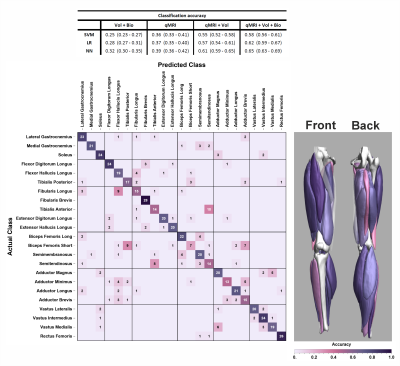 |
Computer Number: 128
2228. Value
of Quantitative MRI in Muscle Classification and Force
Prediction: Insights from the MOTION Study
M. Froeling, R. Brenninkmeijer, D. van der Woude, B.
Bartels, L. Heskamp
University Medical Center Utrecht, Utrecht, Netherlands
Impact: This study identifies key covariates and
demonstrates the added value of qMRI for muscle
classification, while highlighting volume and biometric data
as primary predictors of muscle force. Understanding which
parameters define normal parameters aids in understanding
muscle abnormalities.
|
The International Society for Magnetic Resonance in Medicine is accredited by the Accreditation Council for Continuing Medical Education to provide continuing medical education for physicians.